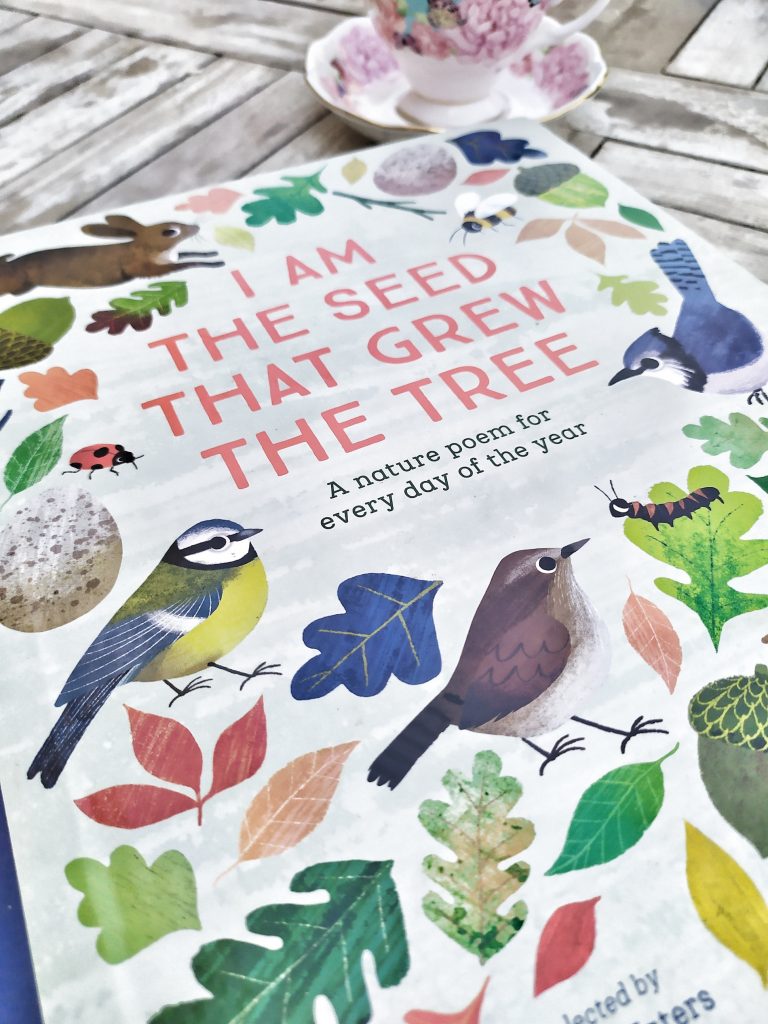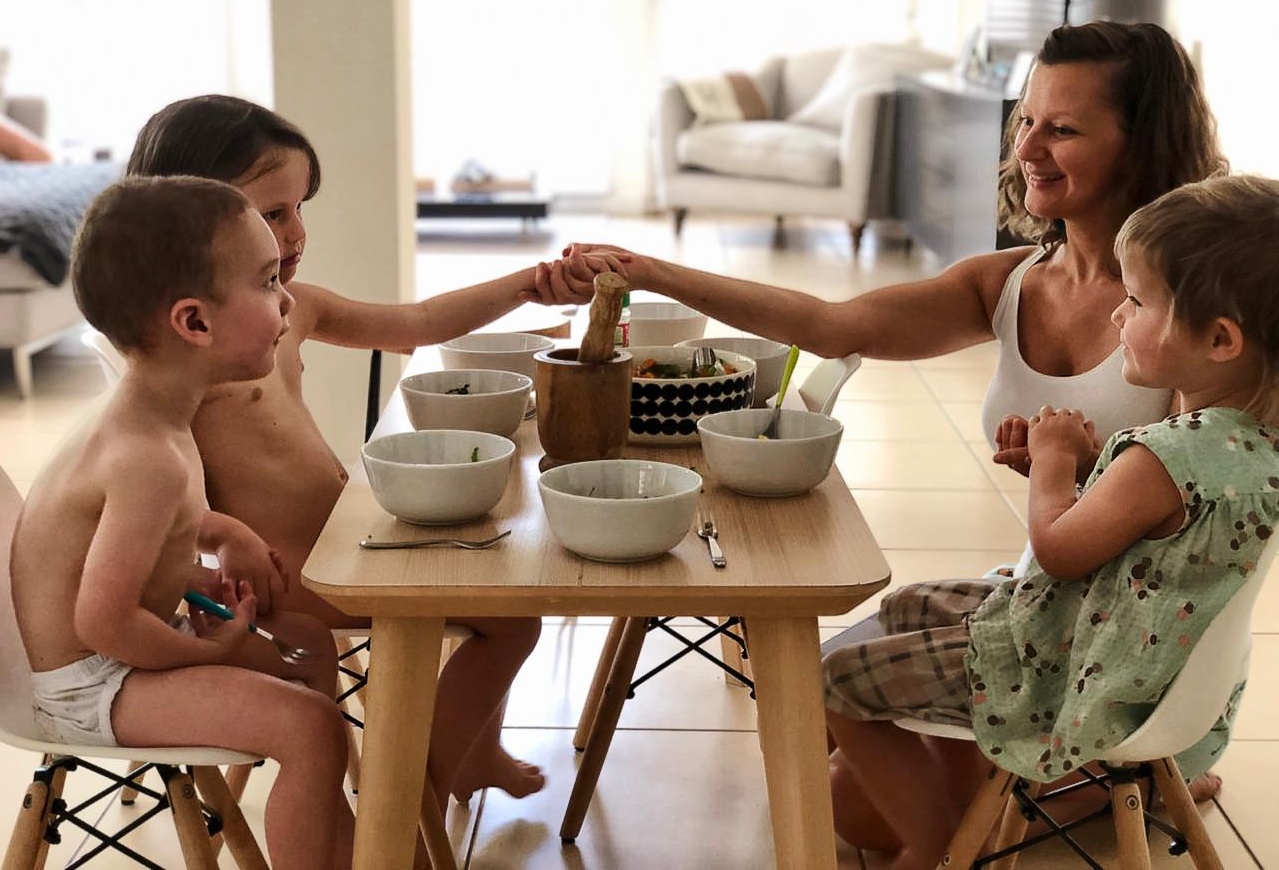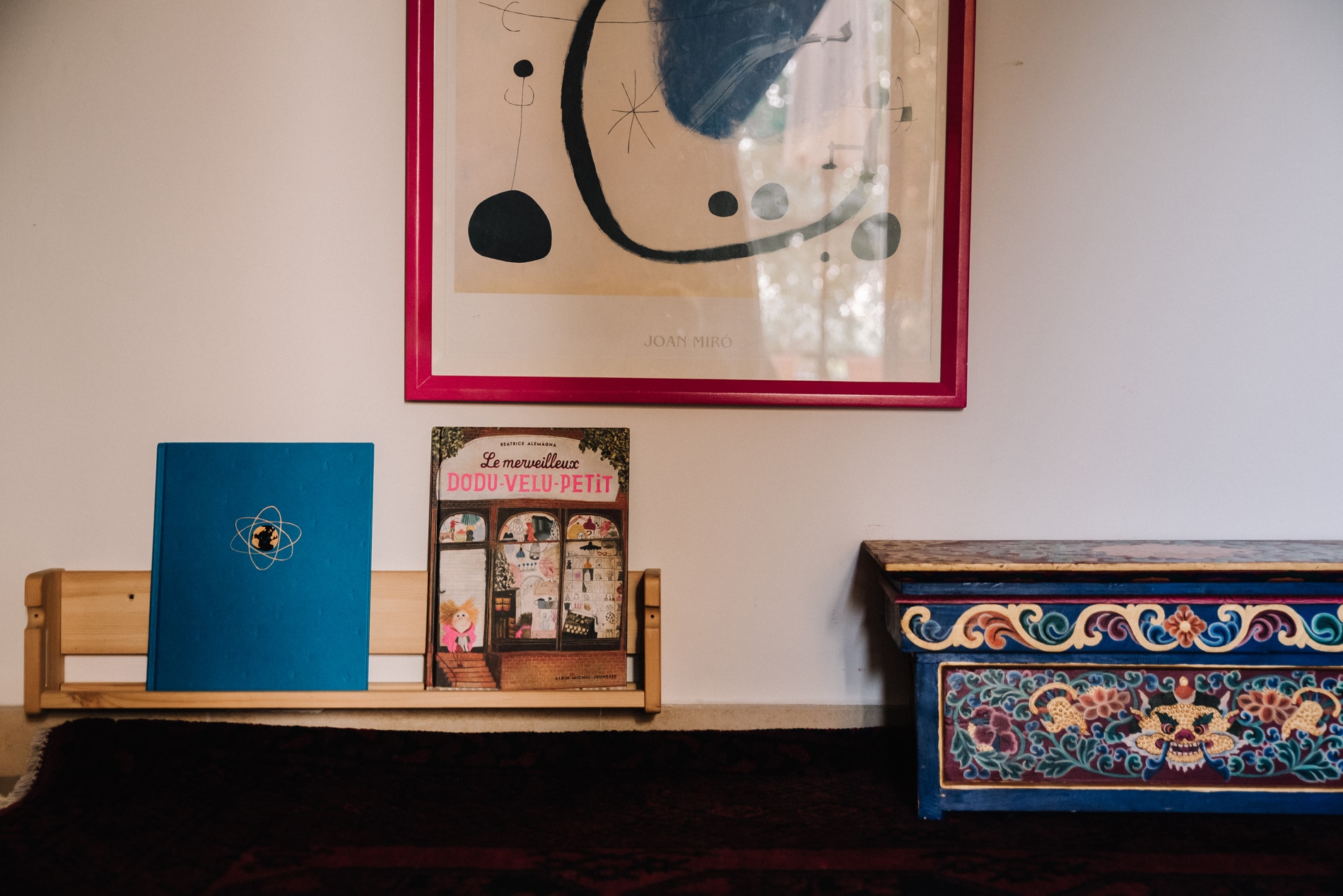The importance of establishing rhythm in our days and creating rituals around this rhythm cannot be underestimated.
We do this by connecting to the rhythm of the world around us and the rhythm of our daily life in order to create meaningful rituals, bringing intention, but with lightness, to key moments throughout our day.
Take a moment to think about the rhythm we see in nature: days, months, seasons, night falling and daybreak. These are the rhythms that we take for granted, but are guided by (consciously and unconsciously).

With grounding, we are able to build our foundations, foundations upon which to grow and develop. It is a type of growth and development that cannot be measured; growth that gives us a strong connection to the Universe, and trust in the power and beauty of nature. And with this type of growth comes an unshakeable belief in oneself, a trust in nature, a trust in one’s own inner wisdom.
Simple rituals are pleasurable and fun during stable times, and provide well-needed moments of grounding and balancing during challenging times. The whole family is better able to flow with the inevitable ups and downs of life when each member (child and adult) is able to centre themselves and find their inner strength.
Creating a ritual around mealtimes is a manageable first step to lock in conscious moments of stillness during a busy day. We can commit to always sit together at a table for meals or snack times, even when it is just ourself and our child – just the two of us 😍
A short Grace/giving thanks at meals and snack times sets the tone for the meal as a shared experience of gratitude and appreciation. When you come together at mealtimes, in the ten seconds before eating, you can take a few deep breaths, hold hands with others around the table to form a circle. Say or sing a Grace. It can be religious or non-religious, whichever is most appropriate for you.
Here are a few of the favourites in our home:
‘Earth who gives to us this food,
Sun that makes it ripe and good
Dear Earth dear Sun by you we live,
Our loving thanks to you we give.’
(Taken from ‘You are your Child’s First Teacher – Rahima Baldwin Dancy’)
French:
Autour d’une table, entre bons amis.
Qu’il est agréable, d’être réunis, oui oui oui oui !
Qu’il est agréable, d’être réunis. Bon appétit ! Merci merci !
And a Maori karakia (prayer):
Ki taku whanau
Me nga hoa
Me te kai
Kia ora
Alternatively a spoken Grace might also resonate with you. Each family member (according to their ability) can say a few words to think about the people who have been involved to bring the food to our table. The words could thank them for their efforts in planting, growing, harvesting, cooking, as well as thank the Earth for the food that she gives us.
In taking these moments to show genuine appreciation and thanks for the simple things that we are blessed with, we come to understand that that there really is no need to teach manners in the way that they were traditionally taught – insisting that our children say please or thank you. Showing gratitude and appreciation for others will come naturally to them as they see this as a natural part of their daily life, the rhythm of their home.

Other moments during the day may lend themselves to a short ritual, easing the transition to, for example, leaving the house in the morning when going to work and/or daycare/school. You can allow a few extra minutes in your schedule for the morning to sit opposite one another, quietly, just holding hands and taking a few breaths together. Then speaking about the day ahead, sing a song or recite a poem. These small but meaningful rituals are even more valuable for situations where you are aware that your child needs extra support in making that transition into a new environment. These are moments in which we can truly connect with our child. They may last only ten seconds, or thirty seconds, or a few minutes however their effects are long lasting and extremely powerful.
A child who needs extra support during a period of Separation Anxiety will benefit enormously from a short daily ritual as described above. It will help him ground and reassure him prior to the separation from the parent.
You can also have a ritual to capture a shared magical stillness once more as your children go to bed at night, thus creating a meaningful ritual of those last waking minutes before your child slips into sleep. Learn more about the bedtime ritual here (hyperlink to The Rhythm of Bedtime.)
Five steps to creating Rhythm and Ritual:
- Recognise that marking the rhythm of your child”s day with simple rituals grounds and supports them in unseen and unmeasurable, yet invaluable ways.
- Look at the rhythm of your day and moments when your children would benefit from a coming together to perform a simple ritual.
- Choose a ritual that is meaningful for you all: saying Grace before a meal, holding hands, lighting a candle, reciting a poem.
- A simple ritual before an often difficult transition, like leaving the house or separating from a parent, can melt away resistance and support a child in her upset.
- Creating rituals around the rhythm of our day supports our children in recognising the rhythm of the world around them: day and night, the passing seasons, the cycle of life to which we all belong.
Similar Posts
- 17 September 2019 00:32
- 11 September 2019 17:50
- 9 September 2019 13:43




